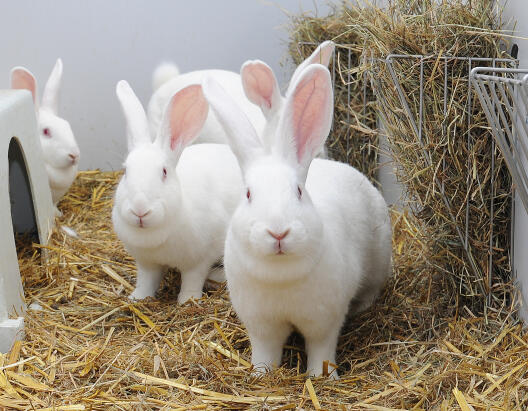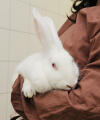Laboratory animals: husbandry
Photos


© UKM - Elisabeth Deiters-Keul 
© UKM - Elisabeth Deiters-Keul 
© Hermann Dornhege 
© Uni MS - Peter Leßmann 
© Uni MS - Peter Leßmann 
© Uni MS - Institut für Kardiovaskuläre Organogenese und Regeneration 
© Uni MS - Institut für Kardiovaskuläre Organogenese und Regeneration 
© Uni MS - Medizinische Fakultät 
© Uni MS - Medizinische Fakultät 
© Tierversuche verstehen
The University of Münster attaches the greatest possible importance to the species-appropriate husbandry and care of laboratory animals. Husbandry for laboratory animals and the carrying out of animal experiments are regulated by law, notably by the Animal Welfare Act, the Animal Welfare Directive on Laboratory Animals, and Directive 2010/63/EU issued by the European Parliament and the Council for the Protection of Animals Used for Scientific Purposes.
Official requirements
For every case of husbandry relating to laboratory animals, an application for approval must be submitted to the relevant authority; approval is only granted when all requirements have been complied with and the husbandry has, in addition, been inspected on site. Only then are animals at all allowed to be kept there. All husbandry must be in strict compliance with the approved details contained in the application as well as with the requirements made by the relevant authority. After approval has been given, the authority checks the husbandry in place for the animals at least once a year, and without advance warning. Over and above this, there is constant communication between researchers, the animal facility supervisor(s), the associated veterinarians, the animal welfare officer, the animal carers and the animal welfare committee to continually optimise husbandry over and above the level required by law.
Forms of husbandry
All forms of husbandry are offered – from conventional husbandry to that covered by Safety Level 3. Many mice are kept in such a way that the temperature, humidity and light rhythms are always the same. The mice are cared for daily by specially trained animal carers and their well-being is checked. Filtered ambient air is fed into the cages used for husbandry via a filter system to ensure that no pathogens infiltrate the cages. These hygiene measures protect both the animals and the people working with them from potential pathogens. Pathogens are also prevented from escaping into the outside world.
Access to the animals is strictly regulated and controlled and is only permitted for trained staff. Sometimes a complete change of clothes is required. Whenever possible, the animals are kept in fixed social groups.
